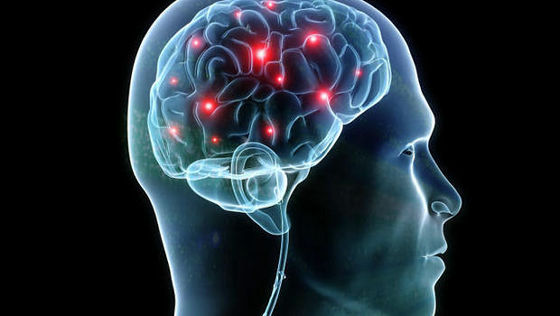Reason why you do not have to worry about obsessive indulgence and indulgence in dreams

ByKarl Gartland
There are a lot of people who have been driven by remorse in their own way because they are lost in delusion during classes and work, they can not concentrate on having things to do but they are drowsy. However, it has become clear that it is not necessarily a bad thing to indulge in daydreams and delusions in research in recent years, and BBC explains the history of brain research and the benefits of "wandering thought" .
BBC - Future - Why we should stop worrying about our wandering minds
http://www.bbc.com/future/story/20151106-why-we-should-stop-worrying-about-our-wandering-minds
Many researchers have tried to clarify that "When concentrating on tasks, which part of the human brain becomes active". Among them, about 20 years ago it was shown for the first time that "the brain is active even if nothing is done". At the time, researchers imposed various tasks while scanning the subject's brain in order to investigate the activity of the brain, and between the task and the task, a break was set for returning the brain to the neutral state . However, this "holiday" was a big problem. In theory, the brain is off with "not thinking", so the subjects were moved in front of a black screen with a white cross, and "Do not think about this cross and think about it "In fact, there was no one who could realize the state that" the brain is off ".
Then in 1997 Dr. Gordon Shulman analyzed the results of nine brain scans and tried to clarify what part of the brain is active when people are paying attention. However, as a result, it becomes clear that the network is activated even if people are not doing something, which is a fact opposite to the purpose.
The idea that "a part of the brain becomes active when shifting from nothing to the task, concentrating on the task" seems very reasonable. However, with a number of studies, some parts of the brain remain inactive even at the moment when the task is actually initiated from a state that is not doing anything, and on the contrary, when people think that they are "doing nothing" I know that there are parts to be activated more than when it is active.

ByAllan Ajifo
Even when the above research results were announced, it took a long time to believe the idea that "the brain does not become inactive". Currently, Dr. Marcus Raichle, who is doing research on the brain at the front line, said that the paper published in 1998 was not recognized as "data must be wrong" at that time. However, nowadays, many papers have been announced that "the brain is surprisingly active even in the" rest state ", and many papers have been published by Dr. RaichleDefault mode networkOften the word is often used.
So why resting brain is activated? Although it becomes matter of concern, although there are various hypotheses about this point, the conclusion has not been drawn yet. In one theory, it is said that the brain is in the state of idling where the brain is called by car, when it suddenly needs activation. It is a well-known fact that "the dreams you see while sleeping are helping to organize the memory of human beings", perhaps that we are staring at the daytime and watching daydreams to strengthen the memory It also shows the possibility that it may be useful.
In addition, it is said that the brain is partly in the state of the default mode network, that the thought about the future such as "Let's eat dinner" "Where shall we go next week"? The brain is programmed to think about the future when there is no task.
Dr. Moshe Bar of Harvard Medical School has preached the idea that "daydreams are building memories about things that have not yet happened", and by seeing daydreams, people actually do things in reality It seems to be able to cope properly when it becomes.
Since it is unknown from the outside whether or not the examinees in the middle of scanning the brain are in introspection, investigating the state where the brain is at rest is extremely laborious work. Perhaps it may be introspection, but on the other hand it is also impossible to wipe out the possibility of thinking about the machine's sound to scan or sounds heard from the outside.

ByRobbie Grubbs
However, the research is progressing gradually, and in Oxford University's project held in September 2015, when the brains of 460 subjects are scanned and when in rest state, which parts of the brain are in contact with each other The survey was conducted. As a result, it was found that there are strong connections to the two parts of the brain that relate to life function and experience, strengthening the memory of people. This work means that the brain seems to be linking "learned content" and "actual experience" to "for a necessary time" by making it think like a wandering thought.
"Why does the brain consume 20% of the energy of human beings?" "Why does the brain's energy consumption change only at 5% at rest and activity?" And "Why does not the brain rest?" That has become a mystery for many years. However, it has been learned that "we are doing" and "seeing daydreams" that were considered "bad habits" until now are gradually beneficial, and even if we can not finish the task within time, BBC suggests that there may be a future that will come to think that "it was an important time for the brain without blaming yourself."
Related Posts:
in Science, Posted by darkhorse_log







